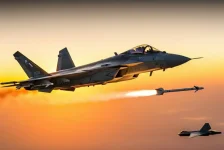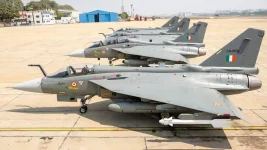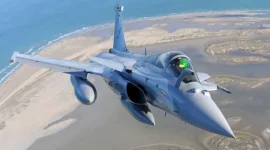- Views: 756
- Replies: 6

A groundbreaking development in India's missile technology has come to light, with Bharat-Shakti released video showcasing IAF's novel pneumatic launcher system. This system is engineered to deploy modern medium- and long-range air-to-air missiles from both manned and unmanned high-performance platforms, signifying a leap forward in aerial combat capabilities.
At the forefront of this innovation is the Astra MkII Beyond Visual Range Air-to-Air Missile (BVRAAM). Boasting a range surpassing 145 kilometers, it is the first BVRAAM to employ a pneumatic launcher. This system, recognized for its rapid deployment capabilities, leverages high gas pressures and robust mechanical components, offering distinct advantages over conventional rail launchers, particularly in challenging operational environments.
The adoption of a pneumatic launcher for the Astra MkII marks a significant shift from its predecessor, the Astra MkI, which utilized a rail launcher mechanism. This transition underscores the adaptability of pneumatic launchers to various missile systems.
Furthermore, the pneumatic launcher is also compatible with the DRDO-developed Rudram 1 Anti-Radiation Missile. This multi-missile compatibility accentuates the potential of a unified launcher system, amplifying operational versatility.

The pneumatic launcher technology showcased in the Bharat-Shakti video exemplifies a notable accomplishment for India's defense sector. It is a testament to the country's prowess in developing state-of-the-art missile systems capable of competing globally. As India continues to prioritize defense research and development, advancements like the pneumatic launcher will be pivotal in safeguarding national security and solidifying technological leadership.




